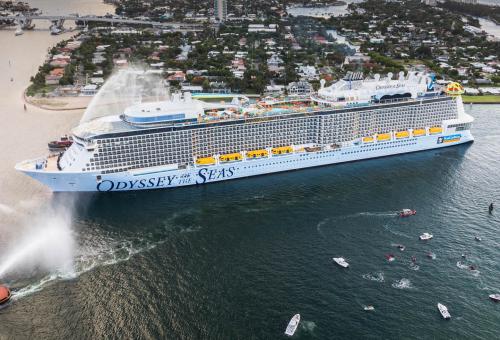As the size of cruise ships has grown, newbuilding projects have become increasingly complex, which calls for a rethink in how the early stages of the design process is organised, says Marjo Keiramo, whose doctoral thesis ‘Pathways of the Creative Journey – the Significance of A Cruise Ship Concept Design’ was accepted at the Aalto University in Helsinki in the spring. The work suggests front loading the design process, involving close cooperation between various partners and a clearer understanding on the focus of each stage of the process.
When the first purpose-built cruise ships entered service in the early 1970s they barely measured 20,000gt, whereas today several existing ships and newbuildings have a gross tonnage more than ten times that figure.
A major vessel today comprises more than nine million parts and requires more than 150,000 assembly tasks. At the end of the concept design stage, only 5% of the work has been done, yet 70% of the cost has been committed. This involves a high risk, which is even greater in the case of prototype vessels.
Keiramo suggests that the present generic timeline- based approach could be replaced by one with three stages before the basic design stage – dream, ambition and creation.
Dream, ambition, creation
At the dream stage, a small number of experts, mainly from the owner, discuss preliminary specifications of the new ship. During the subsequent ambition stage, the output of the previous phase would be enhanced through understanding of the overall product implementation with inputs from technical, engineering and architectural specialists introduced in the picture. Finally, at the creation stage, a large number of experts from various disciplines would be brought in to create a fundamental design concept.
The principal novelty of the approach Keiramo proposes is a more detailed sequencing of the various stages of the design work, which is often a difficult process. It allows monitoring of work status continuously between several teams in a multi-professional environment. Close collaboration between the various teams is of major importance in the new approach.
Keiramo notes that it is important to bear in mind that many new ideas do not emerge in the minds of designers, but rather of those that are involved in face- to-face contact with customers and other stakeholders. Therefore, collaborative partnerships are an elementary cornerstone of the new approach and this requires trust between the various partners involved in the design project of a new cruise ship.
It is not only the scale of cruise ships that is posing challenges to the cruise industry and the yards that build these ships, Keiramo notes. “We need to know what will be needed in the future. Environmental matters will certainly continue to increase in importance. Then there are questions like what benefits does the cruise industry bring to the regions where the ships sail. Also, millennials and younger generations are becoming an increasingly important group of consumers,” she tells The Naval Architect.
The cruise industry has traditionally focused heavily on the baby boomer generation, roughly those born between 1945 and 1965. However, younger generations are already an important part of the business of the cruise industry and it is of vital importance to understand what they expect from a cruise holiday. This again affects the design of ships.
Partnerships and collaborative networks
At the same time, the world is entering the so-called sixth wave of industrial development, in which intelligent and resource efficient technologies are taking over from digital communication as drivers of change. Materials, energy production and its distribution are emerging as the prime fields of technological development, while advances in computing are increasingly focused on integrating human nature and technology.
“Taking into account such a complicated structure of innovation as the cruise ship is and the high demand for breakthrough solutions, generating meaningful new ideas for lucrative concepts in collaborative partnerships and innovative networks is becoming more important than ever,” Keiramo comments in her thesis.
Passion is another crucial aspect that Keiramo says all those involved with the early part of a newbuilding project should be able to bring to the table as well. Designers need to be able to shine, as she puts it, and it is important to make sure that during even busy times the project team does not slow down the concept design work – should this happen, it can lead to a snowball effect that results in bad compromises, not to mention cost and timetable overruns.




